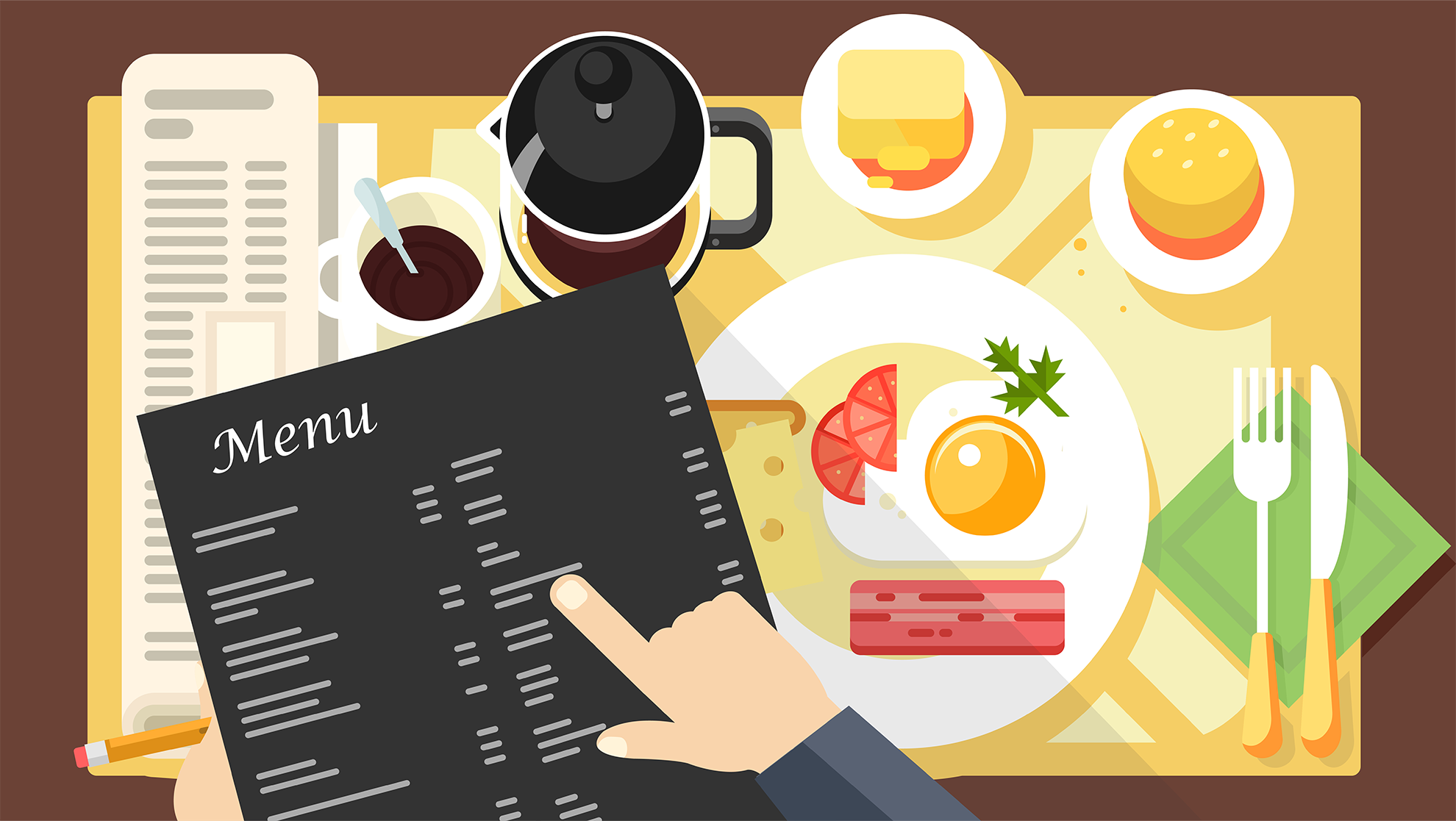Menu design is more than just listing meals on a sheet of paper. Like many things, what seems simple at first actually has a lot of subtle nuances that start before you even think about what your menu will look like.

For a successful menu design, what you put on it is just as—if not more—important than how it looks. While we’ll cover some graphic design best practices in part two so this first part will be more about how to consider the items you should put on your menu.
What Is Design?
Design tends to be a misunderstood term. Most people think of graphic design which is just the aesthetics but real design is done behind the scenes. Making decisions according to a plan or outline is what design actually is. Deliberately creating something with purpose. Menu design is no different and everything should be considered before you even begin to think about layout.
Trendy vs. Staples
Before you begin your menu design journey, you need to create a list of items you’ll be serving. It goes without saying that the most important thing a restaurant needs to decide is their concept and what food they’ll serve. Once that’s decided, a restaurateur should balance classic dishes what dishes are trending while taking into account food costs. Trendy food tends to go out of favour very quickly but classic staples don’t pull in customers. By balancing it out you can draw more people to your restaurant with the trendy food and keep them coming back with your staples. The larger the list, the better and you can edit meals out as needed.
Pricing Your Items
Speaking of food costs, pricing your items will also dictate what goes on your menu. What you should strive for is a profit of at least 20% per dish but that will vary because you will not want to price yourself out of the market. You should expect to spend about 30% of the dish’s price on ingredients and food costs, another 30% on staff and labour, and another 20% on location costs. You should consider cutting out any menu item that won’t make much of a profit.
Portion control should absolutely be taken into account to minimize waste and keep the costs steady. Even with keeping portion sizes consistent, some ingredient prices fluctuate by season. One way to deal with fluctuating costs is to offset them with a few more stable dishes where the costs are low and don’t tend to change—like a pasta or a chicken dish.
Finally, don’t price yourself out of the market. It’s important to do research in the area with similar restaurants to get a handle on what your competitors are charging. Any dish can be charged to provide a 20% profit but if you’re being undercut by your competitors, it isn’t a very lucrative dish as your customers will go to them to get the same dish at a cheaper price.
Ingredients
Picking the right ingredients is also crucial. The best ingredients are the ones that could be used for multiple dishes rather than a single dish. This allows you to streamline the cooking process and expand the size of your menu without sacrificing efficiency. The more recipes you can get from a single ingredient, the larger your menu can be.
Kitchen Size
Your kitchen should be between 15 percent and 25 percent the space of the location. This balances out your seating space with your kitchen space so as not to make your dining area too small where you cannot serve enough customers and your kitchen too small that you can’t keep up with orders. The size of your kitchen will determine how many items are on your menu. The larger the kitchen, the bigger the menu. Having a large menu and a small kitchen runs the likelihood that your staff won’t be able to keep up with lunch and dinner rushes.
Now that you have an idea of what and how many items your menu will have, you can now begin to create a design layout which we’ll tackle in part two of this series.








